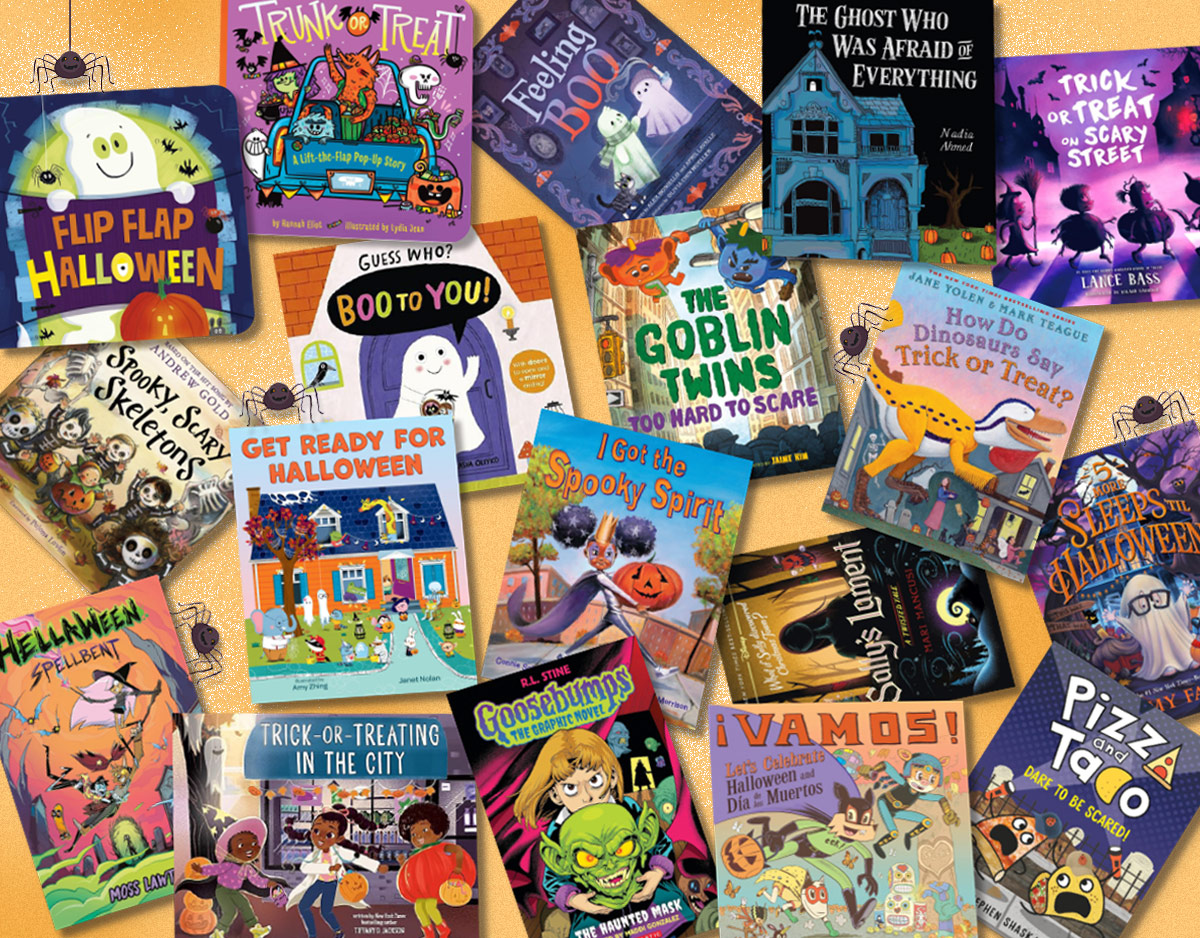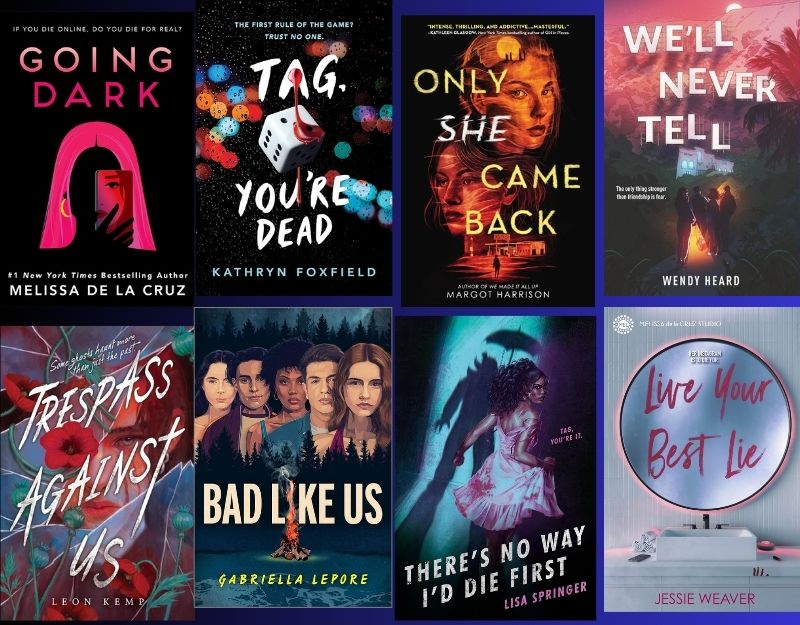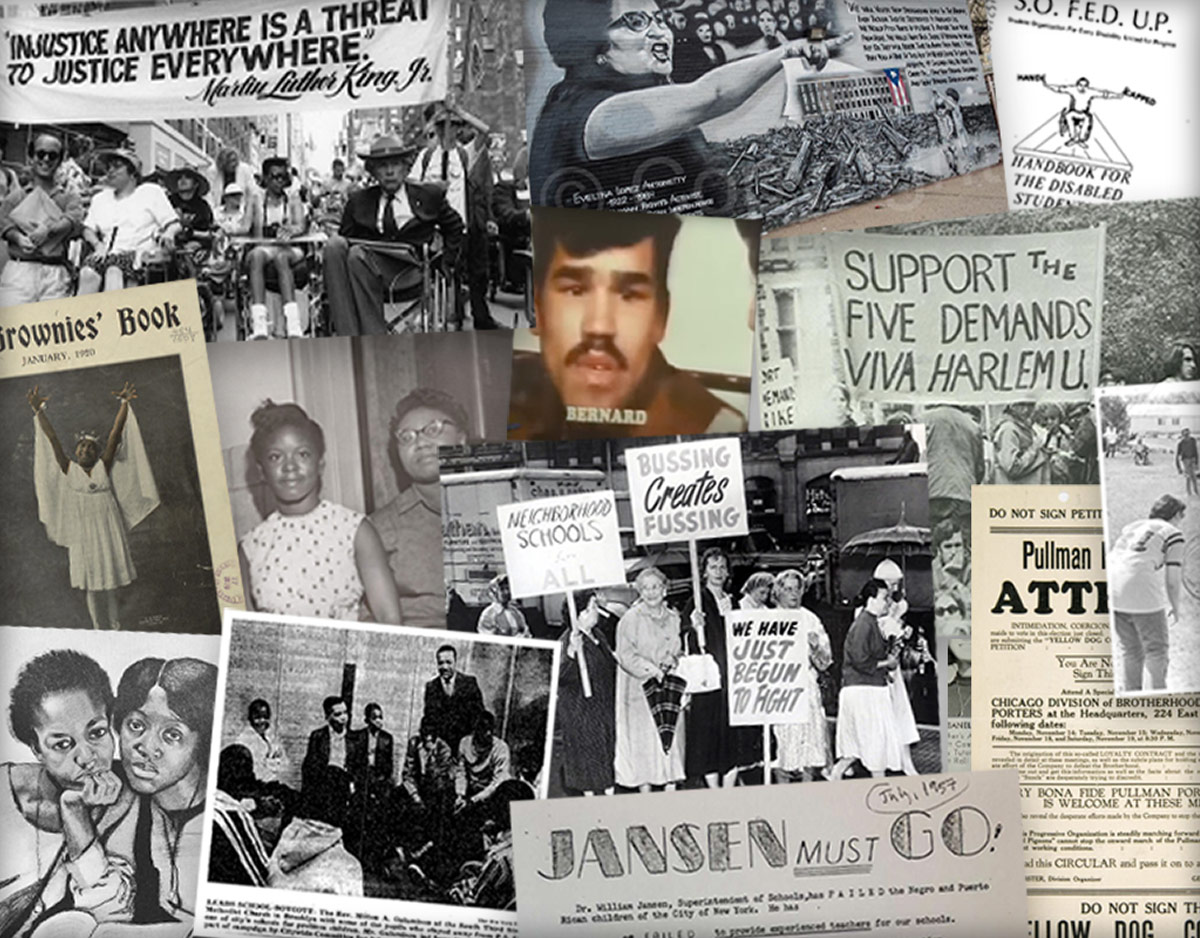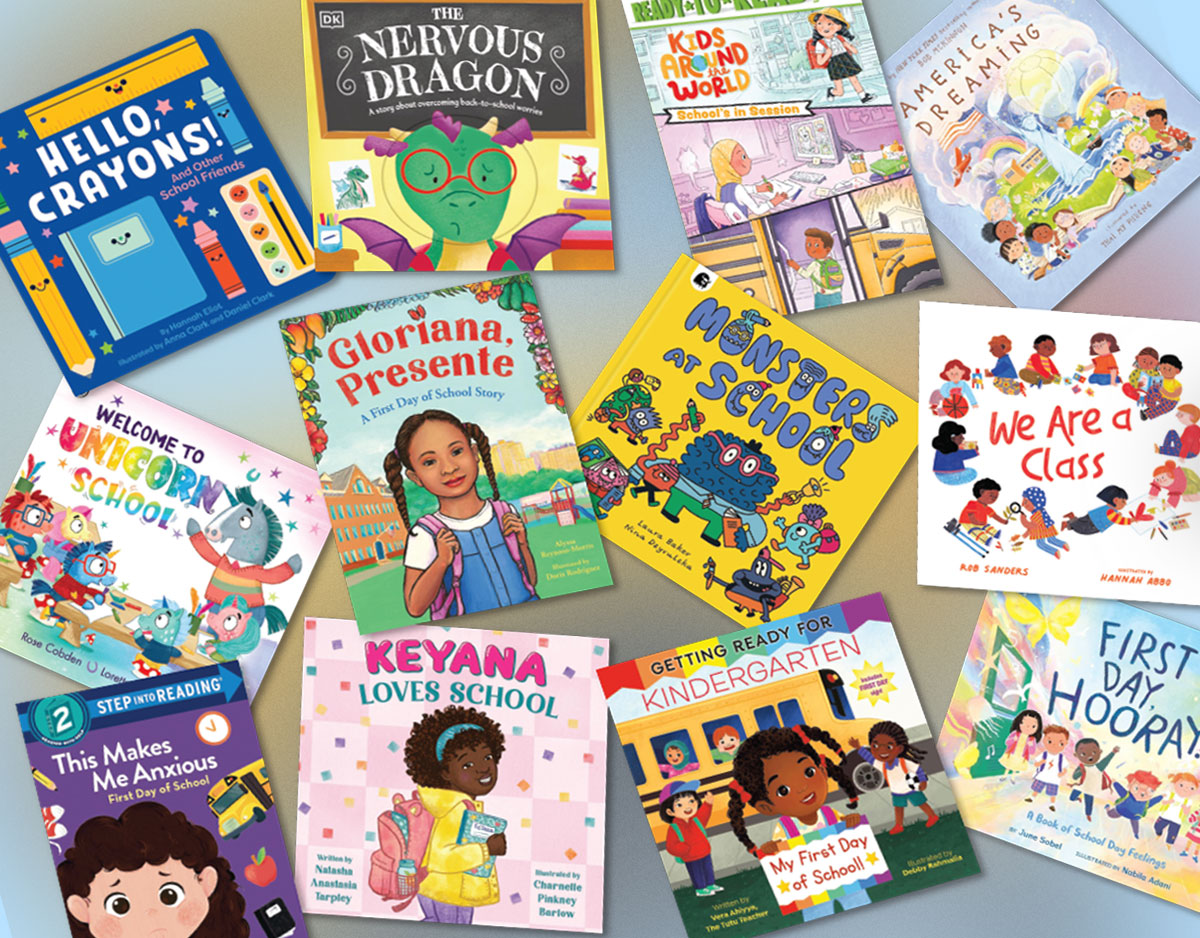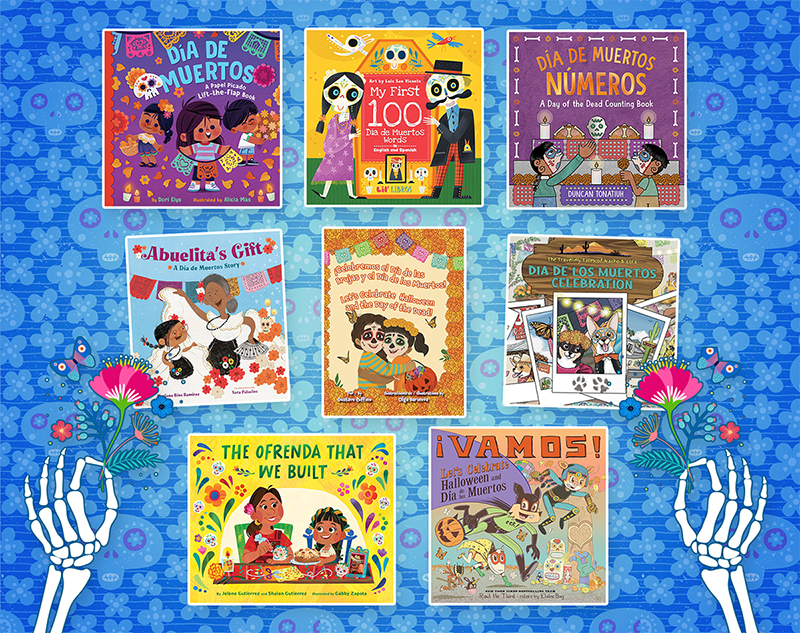Further Predictions! Everything That ISN’T Newbery/Caldecott 2025
Okay!
So last week I summed up the book that I thought might win the Caldecott or Newbery Awards this coming January. But you know what? The American Library Association Youth Media Awards aren’t relegated solely to those two categories! Not by a long shot! So just for kicks, let’s have some fun predicting a slew of the other awards as well. Because why not? Life is short after all.
Because we’ve a lot to go through, I’m not going to linger much on these. They’re just the books I happen to find extraordinary:
Coretta Scott King 2025 – Author
The Coretta Scott King Book Awards annually recognize outstanding books for young adults and children by African American authors and illustrators.
Fighting With Love: The Legacy of John Lewis by Lesa Cline-Ransome, ill. James E. Ransome

Born into love, raised to do what is right, this biography focuses on the young life of the beloved Civil Rights leader and shows where he got his strength of purpose. It’s also that Ransome+Ransome magic at work. James dedicates the book to Jerry Pinkney, and I almost feel like he’s doing his own variation on Pinkney’s style with this bio. As for Lesa, she is so good at writing these bios. I think this might be my favorite John Lewis one yet (and there are a LOT to choose between). It’s really interesting watching her end with that walk over the Edmund Pettus Bridge, mere moment before getting his skull cracked by the waiting police, but it works, man, it works. Love the backmatter too. A great new take on a familiar subject.
ADVERTISEMENT
ADVERTISEMENT
Outspoken Paul Robeson, Ahead of His Time: A One-Man Show by Carole Boston Weatherford, ill. Eric Velasquez

From the moment he was born to the day he died, take this deep dive into the remarkable life of one of America’s great heroes. Activist, actor, athlete, and scholar, there never was, nor will there ever be, anyone quite like Paul Robeson. I swear, you never know what you’re going to get with a Carole Boston Weatherford biography, do you? This is one helluva book, and sort of turns on its head my usual statement about how picture book biographies don’t have to be birth to death. It’s like Weatherford read that and said, “Oh yeah? I am going to show you EVERY aspect of this man’s life!!” I have literally never seen a picture book bio goes this deep into anyone, but if any subject deserved it then it would have to be Paul Robeson. I learned a ton about him here, and the author isn’t afraid to show the controversies that dogged his life either. Also didn’t expect to see an image of someone getting electroshock therapy in a mental institution on my 2024 bingo card, but here we are. I think it’s fair to say that you have never read a picture book biography like this. Just be prepared to carve out a little time in your day if you want to read it.
Kwame Crashes the Underworld by Craig Kofi Farmer

Hey, how often do high fantasies win Corretta Scott King Awards? Answer: Not often enough. After a tricky little aboatia steals something precious from him, Kwame takes a dive into the underworld to get it back. Soon he meets figures from Ghanian mythology, one with diabolical plans. Can Kwame save us all? Funny, fast-paced, but with lots of heart. How is this the first book Farmer has written? I tell you, writing a book of this sort is an art and Farmer is already a master. Right from the start he does this incredible job of pulling you in and introducing all the emotions and pertinent details as quickly and efficiently as possible. The fantasy world is complex but not overwhelming and doesn’t require 500 pages of explanation. But most importantly, the book hinges on what it’s doing with the character of Kwame. His grief and emotional journey just click. Plus it has one of those prophecies that actually work on the page rather than just annoying you. This is a fascinating pairing with another Ghanian middle grade novel Flying Through Water, by the way. The two books couldn’t be more different but they pair together so well. Ghana is hot in 2024! And, you know, if you want to just give Farmer a John Steptoe New Talent Author Award instead? I would be okay with that.
One Big Open Sky by Lesa Cline-Ransome

Or, y’know, we could give Lesa the prize for this book instead. Either way works for me! It’s 1879 and Lettie’s daddy has decided the family needs to pick up and move from Mississippi to Nebraska to start a new life. A marvelous glimpse of the Black exodusters and what it took to cross America on foot. I listened to the audiobook of this which was cleverly cast with three different voices, all women. One could easily have just stuck with one voice, but I really got a better feel for the story having the three women separated like it was. I also didn’t have much trouble telling the characters apart since Ransome tends to try to remind you who folks are as you go. It’s a lot of walking but also a lot of death and drowning, so I found it fairly exciting all the way through. I did NOT expect some of those deaths either! Initially I was not particularly pleased that there were zero mentions of displaced Indigenous people mentioned, but Ransome makes up for that, to a certain extent, in the backmatter. Better still, she manages to avoid having the characters come up with 21st century ideas in a 19th century world. Pretty cool.
Coretta Scott King 2025 – Illustrator
Go Forth and Tell: The Life of Augusta Baker, Librarian and Master Storyteller by Breanna J. McDaniel, ill. April Harrison

Librarians love books about librarians, but this one is legitimately good stuff. There’s something unique about the experience of reading a book about someone you’ve heard about in the past but never had a clear picture of before. When I worked for New York Public Library the name “Augusta Baker” was legendary. She’d retired long before my day (I started in 2003 and she passed away in 1998) but her name was everywhere. We all knew her to be the first Black coordinator of children’s services for New York Public Library. What they didn’t tell us was the sheer amount of good things she got behind. Fortunately we have Breanna J. McDaniel to put all the pieces together, and April Harrison to bring them to life. I mean just look at the cover of this book. This is what I wish we saw a bit more of in our children’s book biographies. A little more creativity and visual metaphors at work. In fact, Harrison is pulling out all the stops on this book. I feel like she was given the go ahead to really lean into her natural inclinations towards gorgeous mixed media. Additionally, if you’ve ever thought to yourself, “Gee, I’d really like to see what April Harrison’s version of Ernie and Bert looked like” your somewhat bizarre wishes have been granted. As a former NYPL employee I also geeked out over a map that appears at one point in the book showing a map of NYC and distinguishing between NYPL, Brooklyn Public Library, and Queens Public Library (I won’t be that person who checks to see if the branches seen are accurate to the time period, though I suspect that they are). And I would be amiss in not hat tipping to McDaniel’s form of storytelling as well. This book covers all its bases but doesn’t load you down with details you don’t need. It’s quick, succinct, and smart. Just like Augusta Baker herself, I suppose.
My Daddy Is a Cowboy by Stephanie Seales, ill. C.G. Esperanza

Just LOOK at that art! When everyone’s asleep, before the sun has even risen, a girl and her daddy ride their horses through the city. A beautiful father/daughter story infused with some serious horse-love. ooooooo. This IS interesting. It feels like a Cowboy Carter-era inspired take on My Papi Rides a Motorcycle. The two would definitely pair beautifully together. The text on this one is great, with this really lovely and touching daddy/daughter storyline going on. But of course it’s Esperanza’s art that’s going to be what draws people to this book. You cannot tell me that the illustrator didn’t base these characters after real people. That daddy feels like someone you could meet tomorrow, he’s so realistic. Love the dynamic, the horse facts, and the whole feel of this book. This one’s a keeper.
Batchelder Award 2025
The Mildred L. Batchelder Award is awarded to an American publisher for a children’s book considered to be the most outstanding of those books originating in a country other than the United States and in a language other than English and subsequently translated into English for publication in the United States during the preceding year.
The Book of Whys by Gianna Rodari, ill. JooHee Yoon, translated by Antony Shugaar [Translation – Italian]

This is one of those books that crosses genres so frequently that you’re in dire danger of getting a headache. Rodari is a big name in the Italian children’s book scene, but here in the States his moniker will mostly be met with blank stares. This particular book is a series of questions from kids that he would answer in his newspaper column (reminding me of another newspaper serial the Italians loved – Pinocchio). But the true star of this show is translator Antony Shugaar who has the impossible task of having to not only translate into rhyme for many of these poems, but to make the jokes work (even the puns!) too. He can only do so much with the questions that are SO Italian they squeak (example: “Why do people say: ‘It’s like shampooing a donkey’s head’?”) but given what he has to work with the man has gone to Herculean lengths. I assure you.
The Cat Way by Sara Lundberg, translated by B.J. Woodstein [Translation – Swedish]
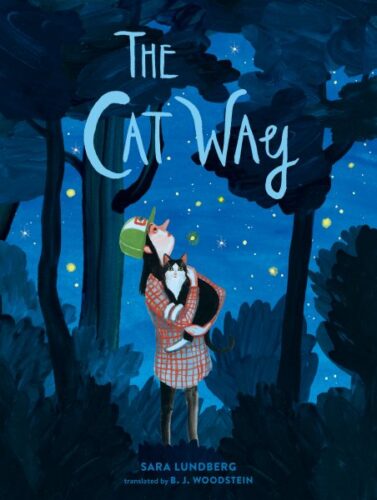
Usually when the human and the cat go walking, the human decides what they should do and where they should go. When things flip, it’s the human who begins to see things in a whole new way. First off, it’s very satisfying to see a book where the main character knows how to hold a cat correctly on the cover. I also am intrigued by the fact that this is the rare picture book where an adult is the main character. There’s a funny surreal quality to this story, while at the same time the emotions are so real to me. It’s both telling its own story straight, while also feeling like it’s talking about a lot more than just the relationship between a woman and her cat. The art is fantastic, I love the gatefold (a rare three-page gatefold, no less!) and the simplicity of the telling. GREAT work by translator B.J. Woodstein, by the way! It really gets the tone of the book down JUST right!
John the Skeleton by Triinu, ill. Marja-Liisa Plats, translated by Adam Cullen

Meet my favorite Estonian picture book of all time. The last time I fell for something from Estonia it was The Ear by Piet Raud, and I stand by my love of that title, but this is something special. First and foremost, I’d like to state for the record that I think the cover is just a touch misleading. I’m not sure why illustrator Marja-Liisa Plats chose to cover John in snails. I think if he was waving nicely that he’d be just fine without them, and it sort of gives the impression that the book is going to be creepier than it is. It is not, for the record, creepy at all, but rather a very sweet testament to growing old, friendship, comfort, and routines. John is a skeleton in a school, but over the years he’s lost some of his digits and bones. He ends up in the possession of Gramps who lives in a cottage with his wife, deep in the woods. They both become very fond of John, and as he acclimates to his life as a “retired skeleton” he becomes close not simply with them but with their grandchildren as well. The book is just broken up into all kinds of little interstitial stories, and as we watch Grams dies and Gramps has to adjust to life without her. It’s sweet, moving, and touching, and there’s this wonderful little moment in the backmatter about the real John where it says, “An ordinary Estonian’s dream is to live in a house where their closest neighbors are at least half a kilometer away. When John got the chance to retire and live on a farm in Vörumaa, which is one of the farthest corners of the country, his dream came true.” Strangely comforting in an all new way.
The Gale by Mo Yan, ill. Zhu Chengliang, adapted by Gu Xiaoxiao, translated by Ying-Hwa Hu [Translation – Chinese]

Having just turned seven, a boy is finally allowed to accompany his grandfather to work, cutting grass for their livestock. But when a massive wind hits them, will they both survive the trip? So the question we lay before you is this: Is this book by Mo Yan, a winner of the Nobel Prize in Literature, appealing to kids at all? I can tell you this much, this book sticks in your brain. I mean, it’s an interesting tale I’ve never really seen before. It reminds me of that old Reading Rainbow book about the farmer whose plow accidentally falls into a hole that becomes an active volcano. Like that book, a farmer must face head on a natural disaster. Only in this case, it’s a real man vs. nature situation, and you don’t know who’s going to win. You might spend a fair amount of time yelling at this book, “It isn’t worth it, man!!!” Still, it doesn’t read like a translation, or even an adaptation, at all. It’s exciting and beautiful to look at. We get a lot of grandparent books in a given year but NONE of them are like this one.
Pura Belpre 2025
The Pura Belpré Award, established in 1996, is presented annually to a Latino/Latina writer and illustrator whose work best portrays, affirms, and celebrates the Latino cultural experience in an outstanding work of literature for children and youth.
Barrio Rising: The Protest the Built Chicano Park by María Dolores Águila, ill. Magdalena Mora

When bulldozers appear in San Diego’s Barrio Logan, the residents are excited for a new park. But when they find out it’s going to be a police station instead, they band together to make their voices heard. An inspiring book based on a true story. These are maybe the most difficult kinds of books to write, in some ways. Activist picture books based on real events can easily come off as preachy or get the tone entirely wrong. Águila, in contrast, grounds her narrative in something kids can completely understand: A new park to play in. In doing so, she shows the slow grassroots movement that can make change, even when the opposing forces just seem too big. Love the writing and the art fits it perfectly. A really sophisticated melding of heart and history.
Call Me Roberto! Roberto Clemente Goes to Bat for Latinos by Nathalie Alonso, ill. Rudy Gutierrez

The highs and lows of one of the greatest baseball players of all time is told here with a special focus on how Clemente fought racism throughout his whole career. A bio of a hero which is also available in Spanish! I’m always on the lookout for good sports books for kids and the fact that this is illustrated by Rudy Gutierrez is just the icing on the cake. Ms. Alonso takes a slightly different tactic with this Clemente book than, say, all the other Clemente picture book bios that have come out over the years. She doesn’t skimp on the fun baseball details, but at the same time she balances them out expertly with what the man had to go through as a Black Latinx professional ball player living through Jim Crow times. Great writing, beautiful art, and the backmatter is to die for.
Geisel 2025
The Theodor Seuss Geisel Award is given annually to the author(s) and illustrator(s) of the most distinguished American book for beginning readers published in English in the United States during the preceding year.
The Good Game by Arihhonni David

When two of the smallest animals in the forest want to play lacrosse or Twewa’á:raton with the other animals, they are told they are too small. Fortunately, a bit of ingenuity makes them worthy opponents in this traditional Akwasasne tale. Mr. David (A Member of the Haudenosaunee Kaniekehaka (Mohawk) people) has a talent for synthesizing stories down to their most essential parts, then turning their texts into infinitely easy reading. It doesn’t hurt that the art is really fun as well. Turning folktales into beginner books is a kind of art that few can replicate this well.
Bat, Cat & Rat: The Cozy Home by Ame Dyckman and Mark Teague

Bat, Cat & Rat all decide to move into a cozy house together. But can three such different animals get along? Funny stories of jokes, jobs, and vacations. I love that with such few words you get such a clear cut sense of each one of these animals’ personalities right from the start. Cat is Oscar, Rat is Felix, and Bat is Pinky from Pinky and the Brain. Each short story builds so nicely on the one that came before it. Has Amy Dyckman never done easy books before? Because she’s a natural at it. Plus it’s nice to see a lot more Mark Teague these days. His choice not to give the bat eyelids? Inspired! It’s like watching a Muppet. Big time fan over here.
The Luna Sisters and Their Amazing Lunafish by Dan Yaccarino

Dan Yaccarino is a man unafraid of science fiction. Perhaps you were lucky enough to read his lovely City Under the City, which was this mind blowingly epic picture book complete with dystopias, robots, and underground NYPLs. Luna Sisters, in contrast, is more of an easy book so he’s necessarily limited by the form. At its heart, it’s a tale of sibling rivalry more than anything else. Nera and Lucy live in the same house on the moon but one lives on the Dark Side, and one lives on the Bright. Their personalities match where they live. When they receive a fish for their birthday (they’re twins, you see) it grows to an incredible size and then Nera decides to sell it. This was a bit of a twist I didn’t see coming, though inevitably Lucy is not on board with this plan. With so few words, Yaccarino is still capable of some fairly epic storytelling in a minute package. All turns out well in the end, but not before the term “cosmic piranha” comes up (as is right). A fine and fancy interstellar tale.
A New Car for Pickle by Sylvie Kantorivitz

Oh no! Pickle was just about to go to Clover Farm to get some delicious strawberries and cream when his car broke down. Will he find the perfect replacement? Lest we forget just how hard these easy books are to write, it takes a hand like Kantorivitz’s to remind us. Like a lot of easy books these days it has a kind of graphic novel format, but I really admired how it managed to pack a whole story into its pages. I think it plays pretty fair with the words (though “strawberries” is a bit complex). Also, if you have any kind of a kid who’s interested in the inner workings of a car, this is THE #1 book to hand them, no question at all. I’m rather charmed.
Sibert 2025
The Robert F. Sibert Informational Book Medal is awarded annually to the author(s) and illustrator(s) of the most distinguished informational book published in the United States in English during the preceding year.
The Iguanodon’s Horn by Sean Rubin

What did the iguanodon really look like? Follow its discovery and the different ways humans have pictured it over the centuries in this magnificently illustrated deep dive into how we’ve changed our minds about dinos. Great first page right from the start. “The iguanodon died a long time ago. A really long time ago. Bit of a bummer way to start a story, but hang on.” From there, Rubin does this marvelous job of not only showing not simply the various interpretations of what an iguanodon might look at, but he takes care to draw those wildly inaccurate images over and over again, improving them slightly each time. The end result is that you’re left not only understanding how science allows for change over time, but also the different ways we’ve viewed dinosaurs over the course of the centuries. But best of all is the fact that when you get to the end you realize that we may STILL not really know what the iguanodon looked like even now. It gives kids the understanding that there’s always something new to discover. I love that. The technicolor dinos with “baggy bits and saggy bits” are worth the price of admission alone.
Life After Whale: The Amazing Ecosystem of a Whale Fall by Lynn Brunelle, ill. Jason Chin

Death for one whale means life for an entire ecosystem of creatures. Take a deep dive into the fascinating science behind a single whale’s contribution to ocean life. I KNEW it! I knew that there would be a really good whale fall book out for kids one of these days! Brunelle gives you a deep dive (forgive me) into not just a whale’s death, but some really fascinating facts about the same whale during life (all the info about their earwax was definitely news to me). It’s kind of unfair to bring Jason Chin into all of this too. I mean, the man’s a ringer. Once he’s on board you may as well throw in the towel and declare the book a winner. Full of facts that I can guarantee you’ve never heard before, and a wonderful circle-of-life type of storyline as well.
The Enigma Girls: How Ten Teenagers Broke Ciphers, Kept Secrets, and Helped Win World War II by Candace Fleming

Imagine you’re just a teen and you’ve been recruited to monitor, break codes, and catalog German intelligence information. The thrilling story of the young women who helped break the German ciphers! I primarily went into this trying to figure out if the book was more teen or middle grade, and after my read I can definitely say that in spite of its teen protagonists, this is 100% MG. The romances are there but awfully odd and British (Gwen’s is by far my favorite) and Fleming cleverly cuts the narrative up with spy and codebreaking information. It even works as an audiobook! You get a real feel for these girls, and I loved how much silliness made its way in. Plus, I’m sorry but it’s kind of a relief to read a WWII book for once that doesn’t have to do with the bomb (apologies to Oppenheimer).
Mountain of Fire: The Eruption and Survivors of Mount St. Helens by Rebecca E.F. Barone

When the earthquakes started, it looked like Mount St. Helens would blow. But when would it happen? A truly gripping and terrifying recounting of the people who survived (and the ones that didn’t). Worst cover. Gripping book, though admittedly it starts kind of slow. You meet all these scientists and reporters and not a lot happens which, of course, is what actually happened when Mt. St. Helens started to rumble. But I tell you, once that thing blows you are in for a whirlwind ride with all kinds of people trying to survive. Did you know that if trees start falling down after a volcano explodes you should jump in the pit where their roots were to escape the fiery blast of air that’s to come? You do now! And here’s a secret: I kinda like that inaccurate cover. Just don’t be surprised when the readers drawn to it just skip to the good parts of the book.
My Antarctica: True Adventures in the Land fo Mummified Seals, Space Robots, and So Much More by G. Neri, ill. Corban Wilkin

Take a trip with G. Neri as your guide to the coldest, windiest, highest, and driest place in the world. Ideal for budding scientists of all stripes! So THAT’s where G. Neri’s been! I hadn’t seen the guy around in a while, so it was a relief on a couple of levels to see this book coming out. And whatta book! This is just fun. Fun fun fun fun fun. It answers every darn question you ever had about Antarctica and teaches you just loads of stuff. Stuff like, who’s there now and why? And what do you eat when you’re there? Neri never shies away from the fact that he’s one of the few Black guys there during his time. The copious photographs are keen but I thought it was clever of someone to add in art by Corban Wilkin as well. I have never, not a day of my life, ever wanted to visit Antarctica before. Now? Seriously tempting….
The Mythmakers: The Remarkable Fellowship of C.S. Lewis and J.R.R. Tolkien by John Hendrix

If you love the Narnia and Lord of the Rings books and want to know the story behind them, look no further! A fascinating dual biography of the best friends who wrote the titles together. Well, this is definitely for the very good readers who peruse our shelves. Honestly, I think this book is ideal not simply for Lord of the Rings and Narnia lovers, but for kids who want to write fantasy. I mean, this is all about the origins of the kinds of fantasy that we love today. Hendrix is literally the only author I know who can get away with talking about Christianity in non-Christian publisher books, and he does it exceedingly well. This book also does something I haven’t seen since Louis Sachar wrote The Cardturner. He has these long in-depth discussions for older readers that the younger readers can skip if they want to. I’d actually consider pairing this with Nathan Hale’s Treaties, Trenches, Mud and Blood since it’s one of the best encapsulations of the inanity of WWI for kids I’ve seen.
Octopus Acrobatics by Sue Fliess illustrated by Gareth Lukas

Behold the incredible octopus! Think you’ve heard everything there is to know about these creatures? You’re bound to learn something new thanks to the gentle rhyming text. I don’t think losing the rhyme is too much of a problem, since I consider the rhymes part of reading it aloud to a large group (and you wouldn’t really read the small text there). The rhymes themselves (which are difficult to write in the first place) are very well done. Best of all, this not only covered all the octopus facts I wanted to see (brains in arms, moms die protecting babies, etc.) it included a couple I’d never heard of before (how have I never heard of octopuses riding jellyfish before?!?). I mean, this is great stuff.
Remembering Rosalind Franklin by Tanya Lee Stone, ill. Gretchen Ellen Powers

There are as many different ways to write a picture book biography as there are people. The trick lies in knowing how to make your book a little more interesting, and a little different from all the others out there (particularly if someone has covered your subject before). The interesting thing about Rosalind Franklin is, of course, the fact that she’s remembered for having her researched used without credit and, in a particularly dick move, getting belittled by jerkwad James Watson. Stone takes particular care to call out Watson in the text of this book, not just the backmatter, and it works because right from the start she makes it clear that what you are about to read is a tragedy. “Dear Reader,” it begins, “This true story doesn’t really have a happy ending.” Finally, the text of this book should be appreciated by folks studying how to write biographies of people who left behind complicated legacies. A smart bit of writing.
Sydney Taylor 2025
Joyful Song: A Naming Story by Lesléa Newman, ill. Susan Gal
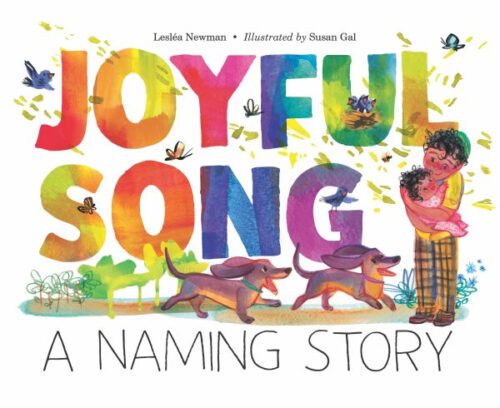
Zachary’s sister is going to her very first Shabbat and she’ll have her first naming ceremony too! As each person asks what her name is, Zachary and his moms invite them to the temple. A gentle tale of a joyful day. I think I read the PDF initially and, for whatever reason, it wasn’t hitting home for me. So I went back with a physical copy and BLAMMO! Much better! You kind of have to see the jewel-like tones of Susan Gal’s art to truly appreciate what’s going on in this book. That moment when Zachary is holding his little sister in the temple, my tear ducts made a break for it. You just never know what’s going to hit you emotionally in a tale, but this one does a good job. I think the repetition of 3s both at the beginning and the end of the book work particularly well, and it’s just a really nice story about a big brother. It makes him feel important, even when the focus is squarely on his little sister. Would actually pair very nicely with WHAT A GOOD BIG BROTHER by Diane Wright Landolf. A class act!
One Small Spark: A Tikkun Olam Story by Ruth Spiro, ill. Victoria Tentler-Krylov +(BB)

In the interests of complete and utter honesty, I read this book at a time when my own Little Free Library had gotten its glass punched in again (this isn’t a tragedy or anything since it happens on an annual basis, but it’s still kind of annoying). In this book you see a similarly abused Little Free Library, so right there my heart went out to it. Then I noticed that the illustrator was Tentler-Krylov who is consistently good at what she does. On a regular basis I run across her books and find myself utterly charmed by them. My two particular favorites were Sanctuary by Christine McDonnell and The High Line: A Park to Look Up To (which she happened to write). The concept of Tikkun Olam is one that adapts so smoothly to a picture book format that it’s funny I’ve never really encountered it before. As Ruth Spiro explains in her Author’s Note, it roughly equates to, “the belief that we each have a responsibility to make the world a better place.” Spiro discusses how the term appears in the Talmud and also in Aleinu, “a prayer of hope for a better future”. The story in the book follows a busted up playground and the people who work to fix it up. Beautifully told and done.
Benji Zeb is a Ravenous Werewolf by Deke Moulton
As if Benji didn’t have enough to worry about! He has to study constantly for his upcoming bar mitzvah, he’s a werewolf in a kibbutz full of other werewolves, and now his frenemy/crush from school Caleb Gao has just shown up as a werewolf too! Well, apparently last year’s vampire/Jewish combo (Don’t Want to Be Your Monster) was just a warm up for Ms. Moulton. This year she has a werewolf/Jewish combo and it is intense! The book runs the usual danger of including almost too much exposition on a SLEW of different topics, but I think the writing and the plotting make up for it. The most touching thing, for me, is how one character has watched someone they loved go down the rabbit-hole of toxic FoxNews b.s. (they never name the station but there is definitely a QAnon character lurking around the pages). It’s a really good character study that touches on everything from anxiety to the history of Chinese workers in America to the logistics of how you precisely turn into a werewolf.
Mendel the Mess-Up by Terry LaBan

Cursed by the evil eye, Mendel can do absolutely nothing right. So when Cossacks attack his small Jewish village, can he turn a curse into a superpower? Personally, I found this a complete an utter hoot. It clarified for me what a Cossack really was. It’s an interesting take on Judaism. LeBan seems a bit reluctant to mention that the Cossacks really zeroed in on Jewish villages to terrorize, which I found odd considering that the entire book, in a sense, hinges on Mendel’s faith. By the way, I completely fell for kvatch, a drink made out of goat sweat. LaBan pranked me but good.
So that’s it for now! What have I missed that you’d like to see included?
Filed under: Best Books, Best Books of 2024
About Betsy Bird
Betsy Bird is currently the Collection Development Manager of the Evanston Public Library system and a former Materials Specialist for New York Public Library. She has served on Newbery, written for Horn Book, and has done other lovely little things that she'd love to tell you about but that she's sure you'd find more interesting to hear of in person. Her opinions are her own and do not reflect those of EPL, SLJ, or any of the other acronyms you might be able to name. Follow her on Twitter: @fuseeight.
ADVERTISEMENT
ADVERTISEMENT
SLJ Blog Network
Hilda and Twig | This Week’s Comics
The Seven Bills That Will Safeguard the Future of School Librarianship
Donuts, Body Image, and Teenagers: Why I Wrote a Plus-Size Theater Kid into the Spotlight, a guest post by Allen Zadoff
Gayle Forman Visits The Yarn!
ADVERTISEMENT



